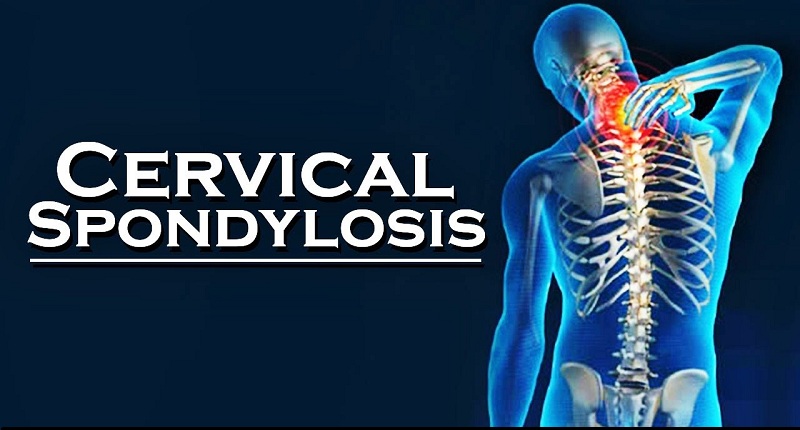What is cervical spondylosis?
Cervical spondylosis, also known as cervical osteoarthritis or neck arthritis, is a common, age-related condition that affects the joints and discs in your neck. It develops from wear and tear of the cartilage and bones found in your cervical spine, which is in your neck. While it’s largely due to age, it can be caused by other factors as well.
Cervical spondylosis causes :
Unfortunately, the bones and protective cartilage in your neck are prone to wear and tear that can lead to cervical spondylosis. Possible causes of the condition include:
- Bone spurs :
These overgrowths of bone are the result of the body trying to grow extra bone to make the spine stronger. However, the extra bone can press on delicate areas of the spine, such as the spinal cord and nerves, resulting in pain.
- Dehydrated spinal disks :
Your spinal bones have discs between them, which are thick, pad-like cushions that absorb the shock of lifting, twisting, and other activities. The gel-like material inside these disks can dry out over time. This causes your bones (spinal vertebrae) to rub together more, which can be painful. According to the Mayo Clinic, this process can begin around age 40.
- Herniated disks :
The spinal disks can develop cracks, which allows leakage of the internal cushioning material. This material can press on the spinal cord and nerves, resulting in symptoms such as arm numbness and sciatica.
- Injury :
If you’ve had an injury to your neck, such as during a fall or car accident, this can accelerate the aging process.
- Ligament Stiffness : The tough cords that connect your spinal bones to each other can become even stiffer over time, which affects your neck movement and makes the neck feel tight.
- Overuse : Some occupations or hobbies involve repetitive movements or heavy lifting, such as construction work. This can put extra pressure on the spine, resulting in early wear and tear.
Risk factors :The greatest risk factor for cervical spondylosis is aging. Cervical spondylosis often develops as a result of changes in your neck joints as you age. Disk herniation, dehydration, and bone spurs are all results of aging.
Factors other than aging can increase your risk of cervical spondylosis. These include:
- Neck injuries.
- Work-related activities that put extra strain on your neck from heavy lifting.
- Holding your neck in an uncomfortable position for prolonged periods of time or repeating the same neck movements throughout the day (repetitive stress).
- Genetic factors (family history of cervical spondylosis).
- Smoking.
- Being overweight and inactive.
Symptoms :Most people with cervical spondylosis don’t have significant symptoms. If symptoms do occur, they can range from mild to severe and may develop gradually or occur suddenly.
One common symptom is pain around the shoulder blade. Patients will complain of pain along the arm and in the fingers. The pain might increase when:
- Standing.
- Sitting.
- Sneezing.
- Coughing.
- Tilting your neck backward.
Another common symptom is muscle weakness. Muscle weakness makes it hard to lift the arms or grasp objects firmly.
Other common signs include :
- A stiff neck that becomes worse.
- Headaches that mostly occur in the back of the head.
- Tingling or numbness that mainly affects shoulders and arms, although it can also occur in the legs.
Treatment options :
Treatments for cervical spondylosis focus on providing pain relief, lowering the risk of permanent damage, and helping you lead a normal life. Nonsurgical methods are usually very effective.
Physical therapy :
Your doctor might send you to a physical therapist for treatment. Physical therapy helps you stretch your neck and shoulder muscles. This makes them stronger and ultimately helps to relieve pain. You might also have neck traction, which involves using weights to increase the space between the cervical joints and relieve the pressure on the cervical discs and nerve roots.
Surgery :
If your condition is severe and doesn’t respond to other forms of treatment, you might need surgery. This can involve getting rid of bone spurs, parts of your neck bones, or herniated disks to give your spinal cord and nerves more room. Surgery is rarely necessary for cervical spondylosis. However, a doctor may recommend it if the pain is severe and it’s affecting your ability to move your arms.
